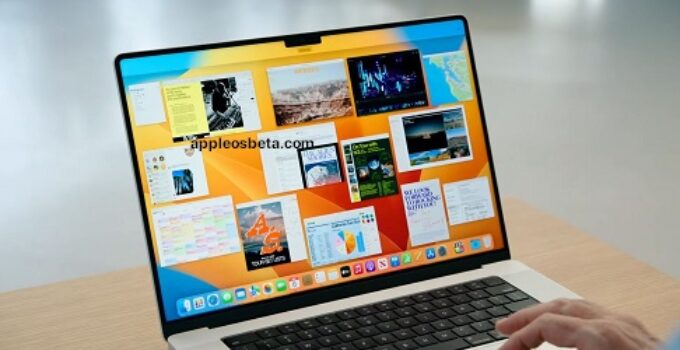How do I use my iPhone as a webcam with Continuity in macOS Ventura? This year, with the release of macOS Ventura and iOS 16, Apple has expanded the capabilities of the camera continuity feature. Users can now use their iPhone as a Mac webcam over a wireless connection. In the article we tell you how to use the “Continuity” function for the Camera.
Apple releases iPadOS and iOS 15.7.1 with important security fixes
The Continuity Camera first appeared in macOS Mojave and allowed users to take pictures on an iPhone or iPad and display them instantly on a Mac. The feature is now greatly improved with the ability to use your iPhone as a Mac webcam. The iPhone camera offers significantly better image quality than the built-in webcam on a MacBook Air or Pro, iMac, or Studio Display. And probably better than most standalone webcams.
Here’s how Apple describes the new functionality:
“With Continuity capabilities, the Mac can automatically recognize and use the iPhone’s camera when it’s nearby — without having to activate or select it — and the iPhone can even connect to the Mac wirelessly for more flexibility. The Continuity Camera brings innovative features to all Macs, including Center Stage, Portrait Mode, and new Studio Lighting, an effect that beautifully illuminates the user’s face and darkens the background. In addition, the Continuity Camera uses the iPhone’s ultra-wide camera lens to activate the “Desk View” mode, which simultaneously shows the user’s face and view of their desktop. This feature is great for making DIY videos, showing FaceTime thumbnails, and more.”
Another great way to use your iPhone as a Mac webcam is Reincubate’s Camo, especially if you need advanced controls. The application can be downloaded for free – you will have to pay to use advanced features.
iPhone as a Mac webcam: how Continuity works for the camera
How to turn on “Continuity” of the camera?
- Make sure your iPhone is running iOS 16 and your Mac is running macOS Ventura.
- Turn on Wi-Fi and Bluetooth on your Mac and iPhone.
- Make sure your Mac and iPhone are using the same Apple ID and that two-factor authentication (2FA) is enabled on your account.
- Camera Continuity is on by default, but you can check it by going to Settings > General > AirPlay & Handoff > Camera Continuity.
- Turn the switch off and then on again if you’re having trouble connecting your iPhone to your Mac.
- Bring your iPhone close to your Mac while running FaceTime, Photo Booth, Zoom, or any other app that can use the camera (also video services in web browsers).
- Your Mac should automatically switch to using the iPhone’s rear camera.
- If the Mac doesn’t automatically use your iPhone’s camera, click the video settings for the app you’re using and select your iPhone from the list (you can also use the iPhone’s microphone).
- Or, as mentioned above, toggle “Continuity for Camera” off and on again.
The screenshot below shows what will be displayed on the screen of your iPhone when using the Continuity Camera. Even third party apps like Zoom work with “Automatic Camera Selection”.
iPhone Features for Mac Webcam
Once your iPhone becomes your Mac’s webcam, you’ll be able to use these handy features: Center Stage, Portrait, Studio Light, and Table View.
- Click the Control Center icon in the Mac menu bar (the icon with two toggle switches in the top right corner).
- Select “Video Effects” in the top left corner.
- You can now enable Center Stage, Portrait, Studio Light and Table View modes.
“Continuity” for the camera works at least 12 meters away from the connected Mac. So you don’t have to keep your iPhone very close to your Mac to use this feature.


